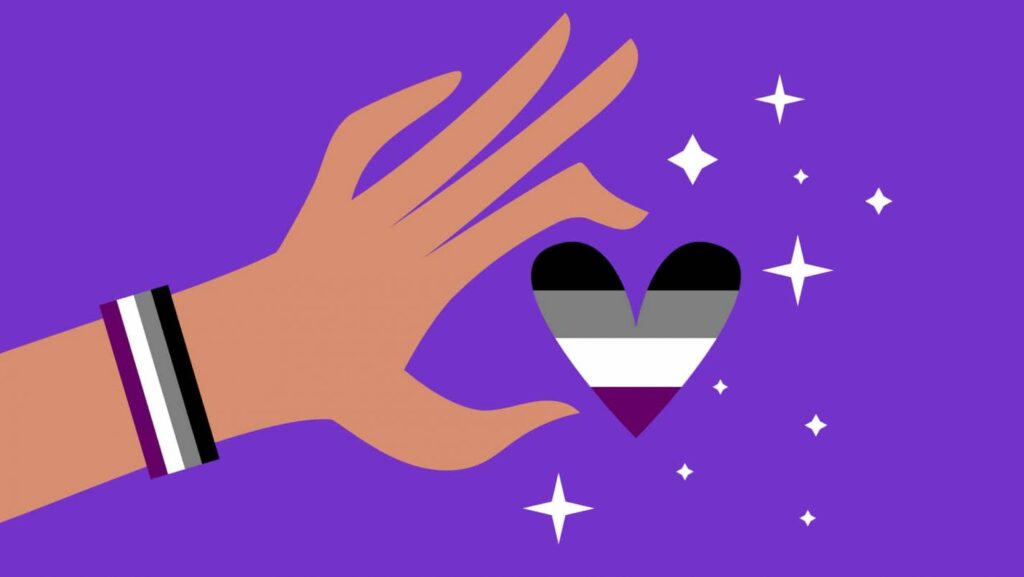Asexual therapy, a specialized form of therapy designed for individuals who identify as asexual, plays a crucial role in navigating emotional well-being and building fulfilling relationships. In this article, we will explore the concept of asexual therapy, its importance, various techniques and approaches used in the field, as well as the benefits it offers to individuals on the asexual spectrum. Whether you are an asexual individual seeking support or someone interested in understanding asexuality better, this article aims to shed light on the significance of asexual therapy in promoting self-acceptance and personal growth.
Contents
What is Asexual Therapy?

Before delving into the realm of asexual therapy, it is important to grasp the concept of asexuality itself. Asexuality is a sexual orientation characterized by a lack of sexual attraction toward others. Asexual individuals may experience romantic, emotional, or aesthetic attractions, but they do not experience sexual attraction as commonly defined by society.
It is crucial to differentiate asexuality from other sexual orientations such as celibacy, which is a choice to abstain from sexual activity, and low libido, which refers to a decreased interest in sex.
Asexual therapy, also known as ace therapy, is a form of counseling specifically tailored to address the needs of individuals who identify as asexual. It provides a safe and supportive environment where clients can explore their emotions, gain a better understanding of their asexuality, and learn coping strategies to navigate the challenges they may encounter.
Challenges Faced by Asexual Individuals
Asexual individuals often face unique challenges in a society that predominantly emphasizes sexual relationships and desires. One of the primary difficulties is the lack of understanding and acceptance of asexuality. Many people find it difficult to comprehend asexuality due to its divergence from societal norms. This lack of understanding can lead to feelings of isolation, self-doubt, and the pressure to conform.
Additionally, misconceptions about asexuality further compound the challenges faced by asexual individuals. Some mistakenly believe that asexuality is merely a phase, a result of trauma, or a medical condition that can be “cured.” These misconceptions can invalidate an individual’s identity and lead to feelings of invalidation, shame, and self-doubt.
The Role of Asexual Therapy
Here are some key roles and benefits of asexual therapy:
- Identity exploration: Asexual therapy provides a safe and non-judgmental space for individuals to explore and understand their asexual identity. It can help clients gain clarity about their feelings, experiences, and how they relate to their asexuality.
- Validation and acceptance: Many asexual individuals may experience feelings of isolation or face challenges due to societal misconceptions or lack of awareness about asexuality. Asexual therapy offers validation, support, and a sense of belonging, helping clients feel accepted and understood.
- Coping with stigma: Asexuality is often misunderstood or dismissed, and individuals may encounter stigma, discrimination, or pressure to conform to societal norms. Asexual therapy can assist clients in developing coping strategies to navigate these challenges, build resilience, and cultivate a positive self-image.
- Relationship support: Asexual therapy can help individuals navigate their relationships, whether they are with sexual or asexual partners. Therapists can guide communication, negotiation of sexual boundaries, and finding compatible relationship models that suit the needs and desires of the individuals involved.
- Mental health support: Asexual therapy can address mental health concerns that may be associated with asexuality, such as anxiety, depression, or feelings of inadequacy. Therapists can assist individuals in developing effective strategies for managing these challenges and improving their overall mental well-being.
- Education and advocacy: Asexual therapy can also involve education about asexuality, including dispelling myths, providing accurate information, and raising awareness. Therapists can advocate for their clients within healthcare settings, educational institutions, and other contexts to promote understanding and inclusivity.
Types of Asexual Therapy
Asexual therapy encompasses various therapeutic approaches tailored to meet the specific needs of asexual individuals. The following are some common types of asexual therapy:
Individual Therapy
Individual therapy is a one-on-one therapeutic relationship between an asexual individual and a therapist. It provides a private and confidential space for clients to express their thoughts, emotions, and concerns. Through individual therapy, clients can gain insights into their asexuality, explore its impact on their lives, and develop strategies to navigate relationships and emotional well-being.
Couples Therapy
Couples therapy, also known as relationship therapy, focuses on helping asexual individuals and their partners build and maintain healthy relationships. It provides a safe space for open communication, validation of both partners’ experiences, and the exploration of strategies to address the challenges that may arise in an asexual-allosexual (non-asexual) relationship.
Group Therapy
Group therapy brings together asexual individuals in a supportive group setting facilitated by a therapist. It offers a sense of community, validation, and the opportunity to learn from others who share similar experiences. Group therapy provides a platform for individuals to exchange coping strategies, develop social skills, and foster connections with like-minded peers.
Techniques and Approaches in Asexual Therapy

In asexual therapy, therapists employ various techniques and approaches to support individuals who identify as asexual. These techniques focus on helping clients explore their asexuality, address challenges, and promote their overall well-being. Here are some common techniques and approaches used in asexual therapy:
- Psychoeducation: Asexual therapy often begins with providing psychoeducation about asexuality. Therapists help clients understand what asexuality is, explore different aspects of the asexual spectrum, and clarify any misconceptions or myths. This education can empower clients and provide them with a foundation for self-discovery and acceptance.
- Narrative therapy: Narrative therapy focuses on the client’s personal story and how it intersects with their asexual identity. Therapists encourage clients to share their experiences, challenges, and strengths related to their asexuality. By exploring and reframing their narratives, clients can gain a deeper understanding of themselves and find ways to navigate societal expectations and pressures.
- Cognitive-behavioral therapy (CBT): CBT techniques can be used in asexual therapy to address negative thoughts, emotions, or behaviors related to asexuality. Therapists help clients identify and challenge any self-limiting beliefs or internalized stigma, promoting healthier attitudes and self-acceptance.
- Mindfulness and self-compassion: Mindfulness practices and self-compassion techniques can be beneficial in asexual therapy. These approaches help individuals cultivate a non-judgmental and accepting attitude toward their asexuality. Mindfulness can assist in managing stress, enhancing self-awareness, and promoting overall well-being.
- Relationship and communication skills: Asexual therapy may involve supporting clients in navigating their relationships. It includes intimate partnerships, friendships, and family dynamics. Therapists can assist in developing effective communication skills, setting boundaries, and negotiating the needs and desires of all involved parties.
- LGBTQ+ affirming therapy: Asexual therapy often takes an LGBTQ+ affirming approach, recognizing that asexuality is a valid sexual orientation within the broader spectrum of human diversity. Therapists create a safe and supportive environment that acknowledges and affirms the client’s asexual identity, helping them build a positive self-image.
- Support groups and community involvement: Therapists may facilitate or refer clients to support groups or community resources specifically tailored for asexual individuals. Participation in these groups can provide a sense of belonging, validation, and opportunities for peer support and social connection.
Benefits of Asexual Therapy
Asexual therapy offers numerous benefits to individuals seeking support and understanding. Some of the key benefits include:
Validation and Self-Discovery
Asexual therapy provides a validating space where individuals can explore and embrace their asexuality without judgment. It offers an opportunity for self-discovery, self-acceptance, and the development of a positive sense of identity.
Building Healthy Relationships
Asexual therapy equips individuals with the necessary tools and strategies to build and maintain healthy relationships. It helps both asexual individuals and their partners navigate differences in sexual needs, communicate effectively, and foster intimacy and emotional connection.
Coping with Societal Pressures
Asexual therapy assists individuals in developing coping mechanisms to deal with societal pressures and misconceptions surrounding asexuality. It provides support in managing external expectations, addressing feelings of isolation, and building resilience.
Finding an Asexual Therapist

Finding an asexual therapist who is knowledgeable and experienced in working with asexual clients can be an important step in receiving effective support. Here are some suggestions for finding an asexual therapist:
- LGBTQ+ therapy directories: Look for therapy directories or databases that specifically cater to LGBTQ+ individuals. These directories often include filters or categories to search for therapists. They have experience working with asexual clients or specialize in sexual orientation issues.
- Asexual community resources: Reach out to asexual community organizations, support groups, or online forums. These resources may have recommendations or referrals for therapists who are familiar with asexuality and provide affirming therapy.
- Online therapist directories: Utilize online therapist directories. These directories usually allow you to filter therapists by specialty. You can search for terms such as “asexual,” “sexual orientation,” or “LGBTQ+” to find therapists who explicitly mention experience in working with asexual individuals.
- Asexual advocacy organizations: Contact asexual advocacy organizations, such as AVEN (Asexual Visibility and Education Network), and inquire about therapist referrals. They may have lists or resources for asexual-affirming therapists or be able to guide finding appropriate support.
- Consultation with therapists: Once you find potential therapists, consider scheduling a consultation session or phone call to discuss your needs and ask specific questions about their experience working with asexual clients. This can help you assess their knowledge, understanding, and suitability for your therapy goals.
Conclusion
Asexual therapy serves as a vital support system for individuals who identify as asexual, offering a safe space to explore their emotions, navigate relationships, and embrace their authentic selves. Through various techniques and approaches, asexual therapy empowers individuals to lead fulfilling lives, fostering understanding and acceptance in both personal and societal contexts.
Life may sometimes be challenging for asexuals, but Online Asexual Counseling can help. Get experienced LGBTQ therapists at PrideMantra: Book a trial LGBTQ therapy session


